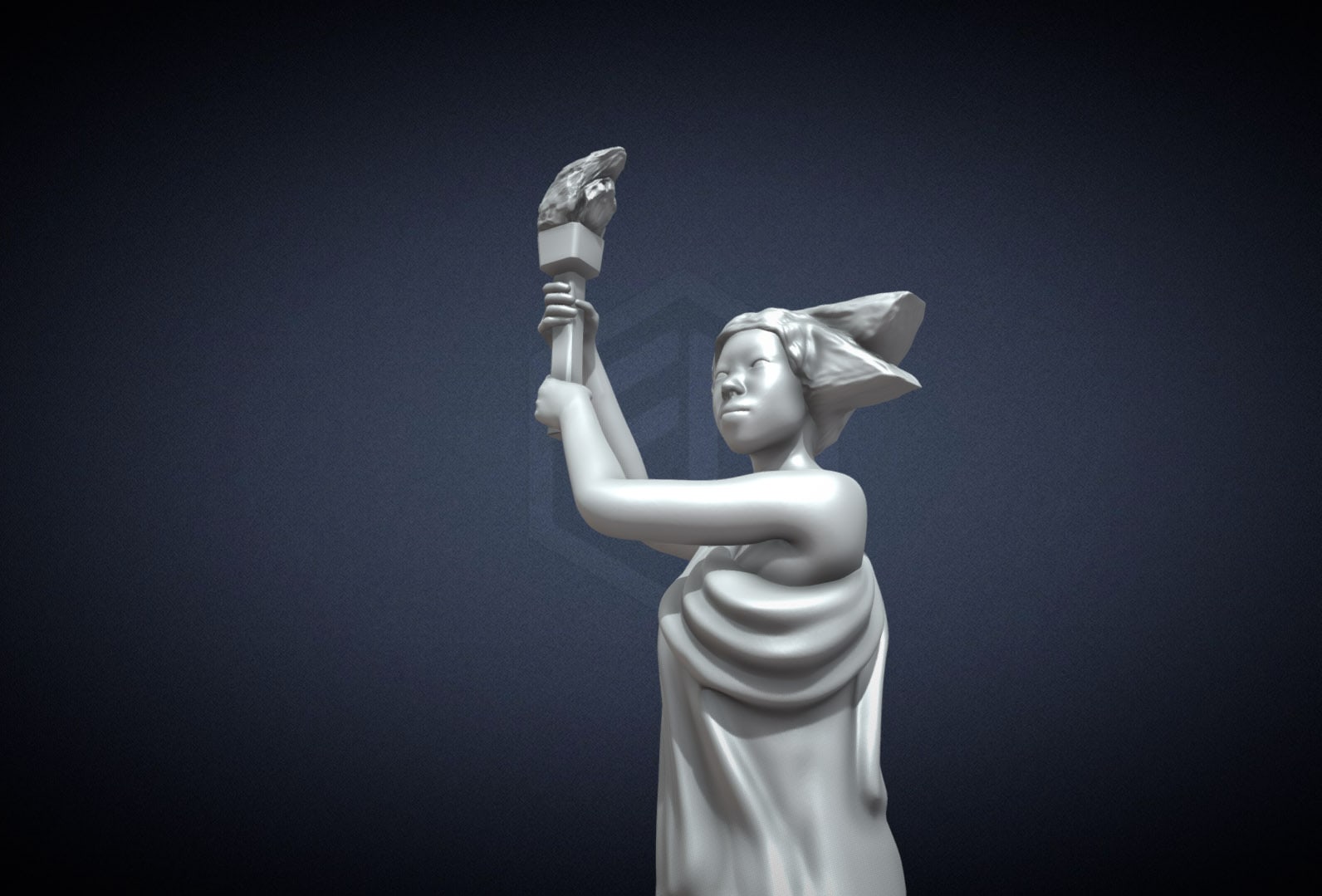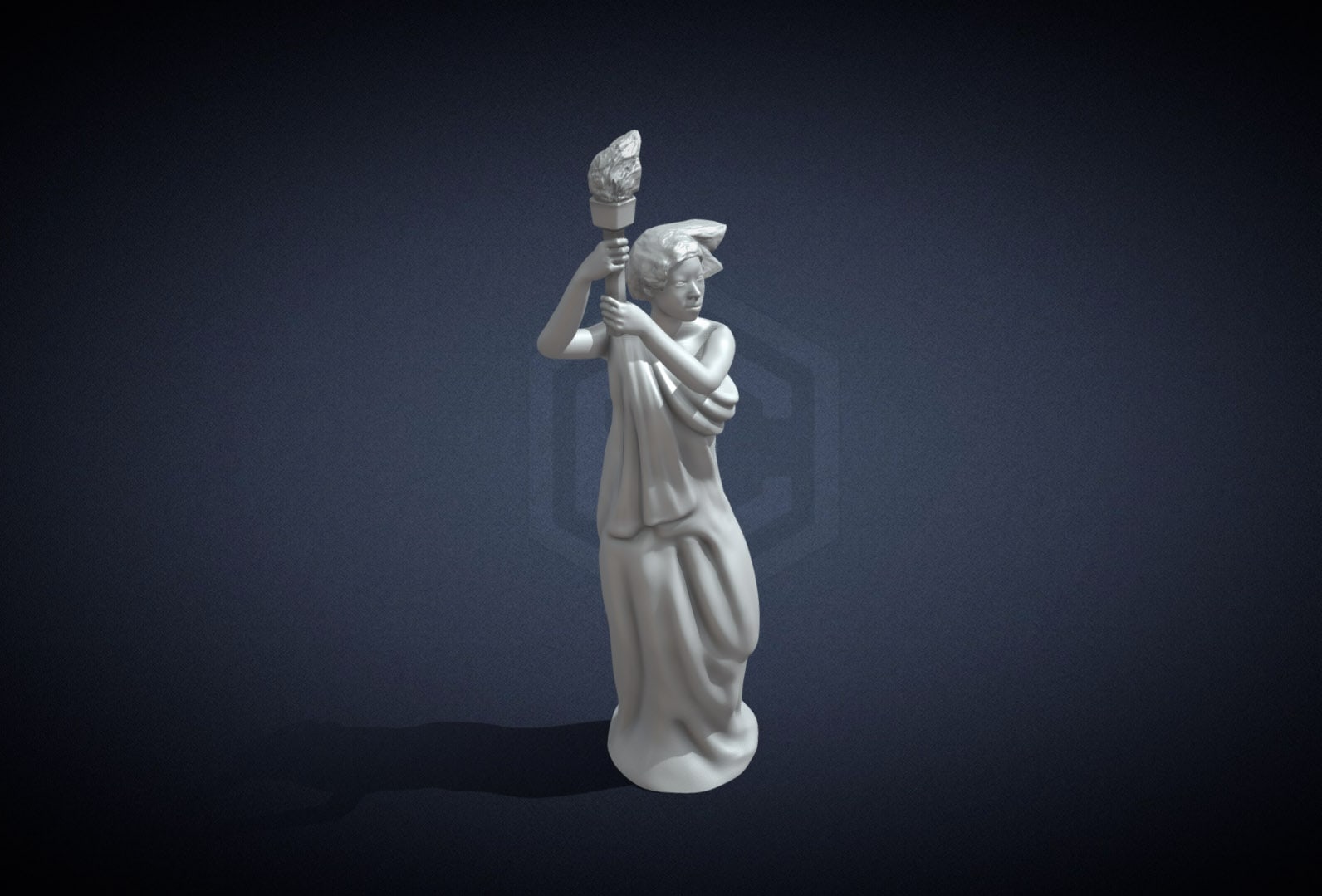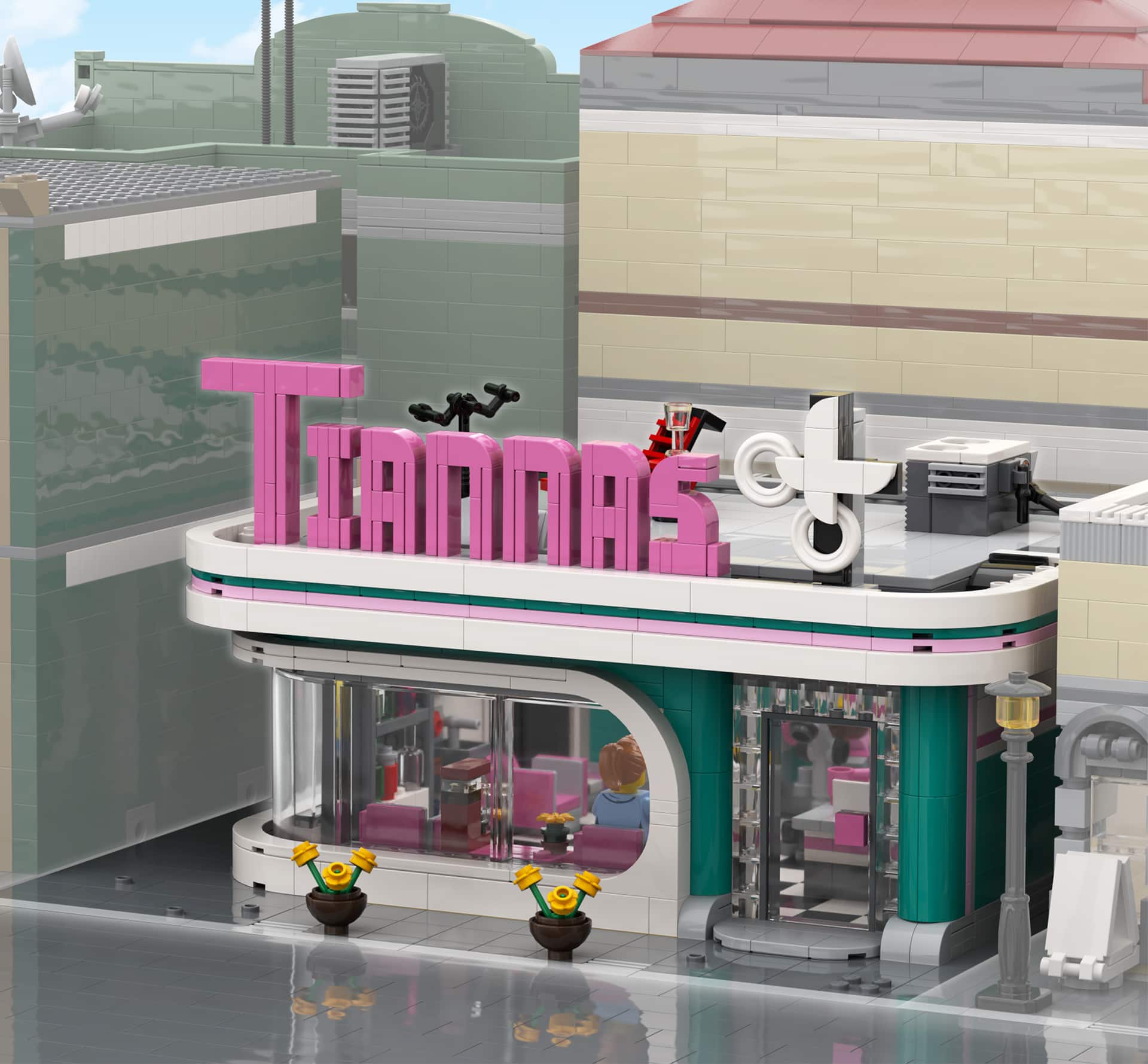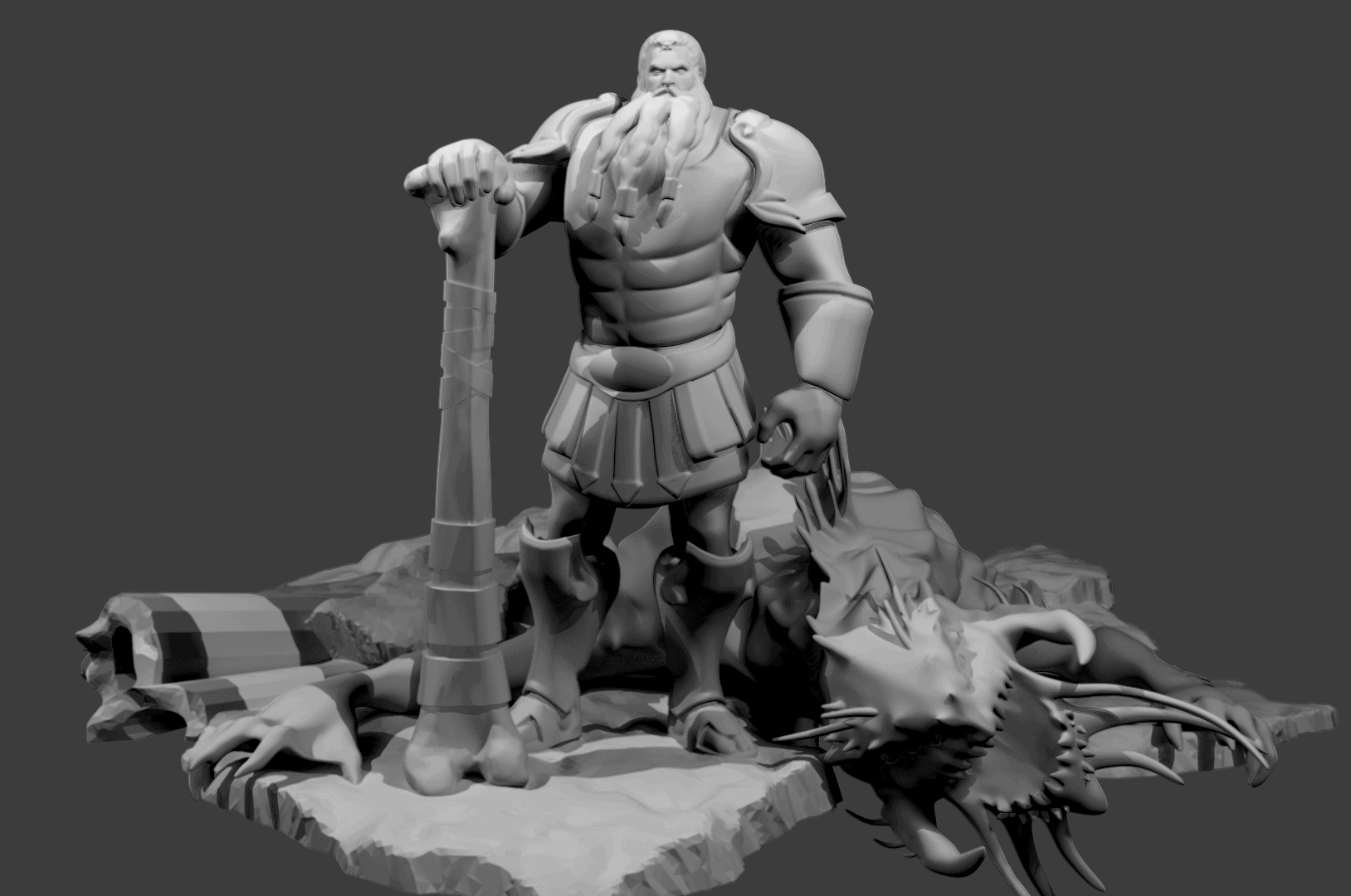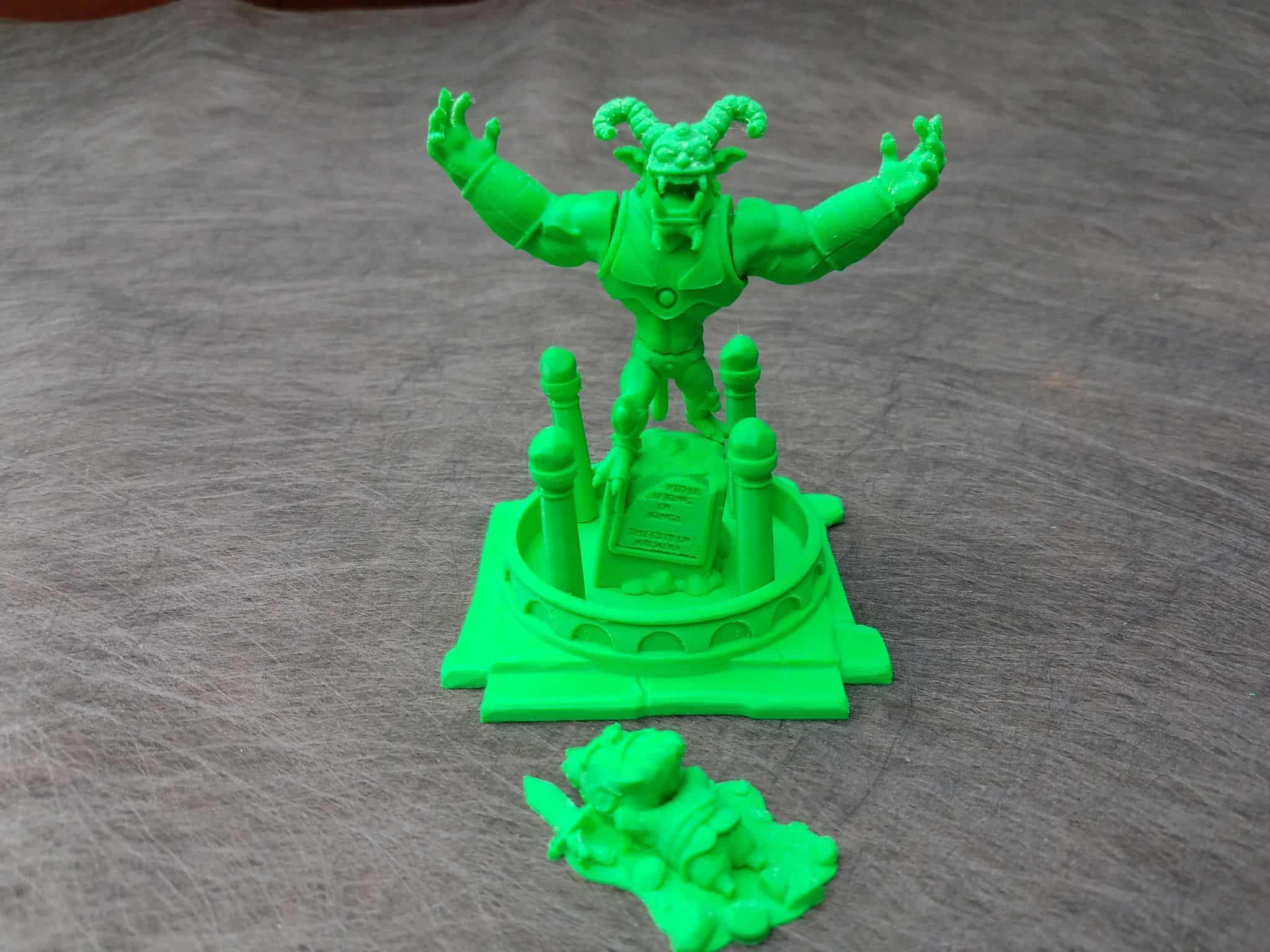I received an e-mail from the Human Rights Foundation in late 2020 asking if I’d be willing to put together a 3D Model for them. The subject in question was a statue called the ‘Goddess of Democracy‘. It’s probably because I’m a sheltered American, but I didn’t know much about this statue beforehand; the short version is that it was a statue created as part of the 1989 Tiananmen Square protests.
The images I could find of the original statue were not particularly sharp in some of the details. Fortunately, there have been a handful of modern renditions around the world that I could lean on a bit more for general reference and inspiration.
The client in this case wanted a statuette that would stand about 6 inches tall when printed. When I asked if they wanted me to try and replicate the angular, rocky look from the older reference images, they requested a ‘smoother look… that captures the spirit of the original piece’.
I knew I’d want to work a lot of this model up in ZBrush just because of the flowing and organic nature of the shapes. Before that, though, I decided to rough the low-poly geometry out in 3D Studio Max. I have a few rigged meshes saved for when I need to work on humanoid models so I grabbed one and started moving her into what felt like approximately the right pose.
It took a bit of tweaking, but I eventually got her into something I felt was a close resemblance. A thing I noticed as I was working was that a of the more modern statue versions of the Goddess don’t exactly line up in terms of posture, which is to be expected. I think I ended up on something of an ‘average’ of all of the reference material I was working from.
Once I had the general posture I was after, I started creating some low-poly robe shapes.
With that roughed out, I brought everything into ZBrush to play around with. I’m still learning a lot about ZBrush’s interface, so it took me a little bit to get things started, but once I got rolling it felt like the right tool for the job. The biggest thing for me here was ZBrush’s ‘mesh extract‘ tool, which let me select areas of the base robe shape with a brush and pop them out into separate meshes that I could then give some depth to and sculpt on.
Being able to layer the fabric like this made the process of adjusting the shapes I needed much easier – each piece was its own subtool in ZBrush, which meant that I could limit the effects of my brushing to just the components I had highlighted. Once I was reasonably happy with the way the robe was looking, I brought in some of the other low-poly elements I had modeled in 3DS Max, like the torch and a version of her hair to play around with.
I wanted to consolidate the various pieces of her robe down and smooth things out. ZBrush has some really impressive boolean tools, so combining all of the separate pieces into a single mesh is basically a button click. Bearing in mind that the client had asked for a smoother look to the model, I went in and started softening some of the intersections between where the fabric layers joined together. Once I was satisfied with that, I went in and added a bit of detail to the hair and the flame on the torch.
The client was happy with this look, so I sent the files over so they could begin production on their end. It looks like they use the Goddess of Democracy as the basis for their annual Václav Havel Prize for Creative Dissent!
I might actually print one of these for myself on my resin machine in the future, just to have around. It was definitely a good way to practice a bit of ZBrush work, and serves what I consider a pretty good cause to boot!
I went ahead and added a basic .STL of the model to the webstore in case anyone might be interested in printing their own. If you do, please share the results!
